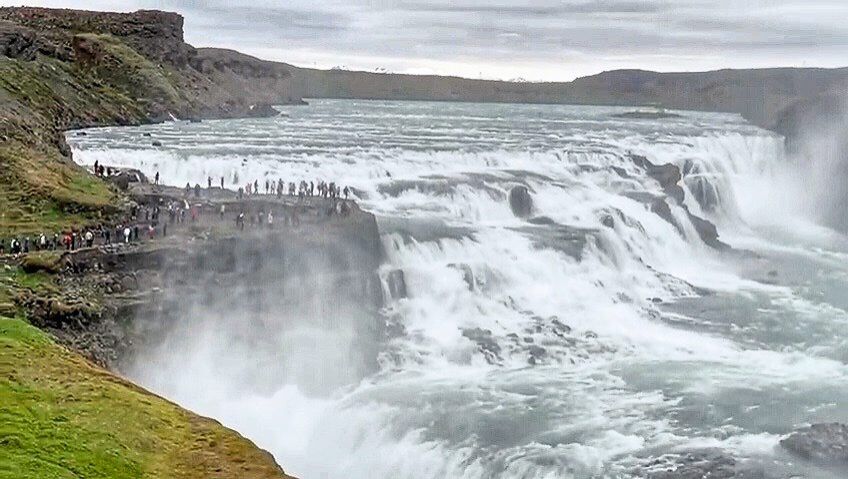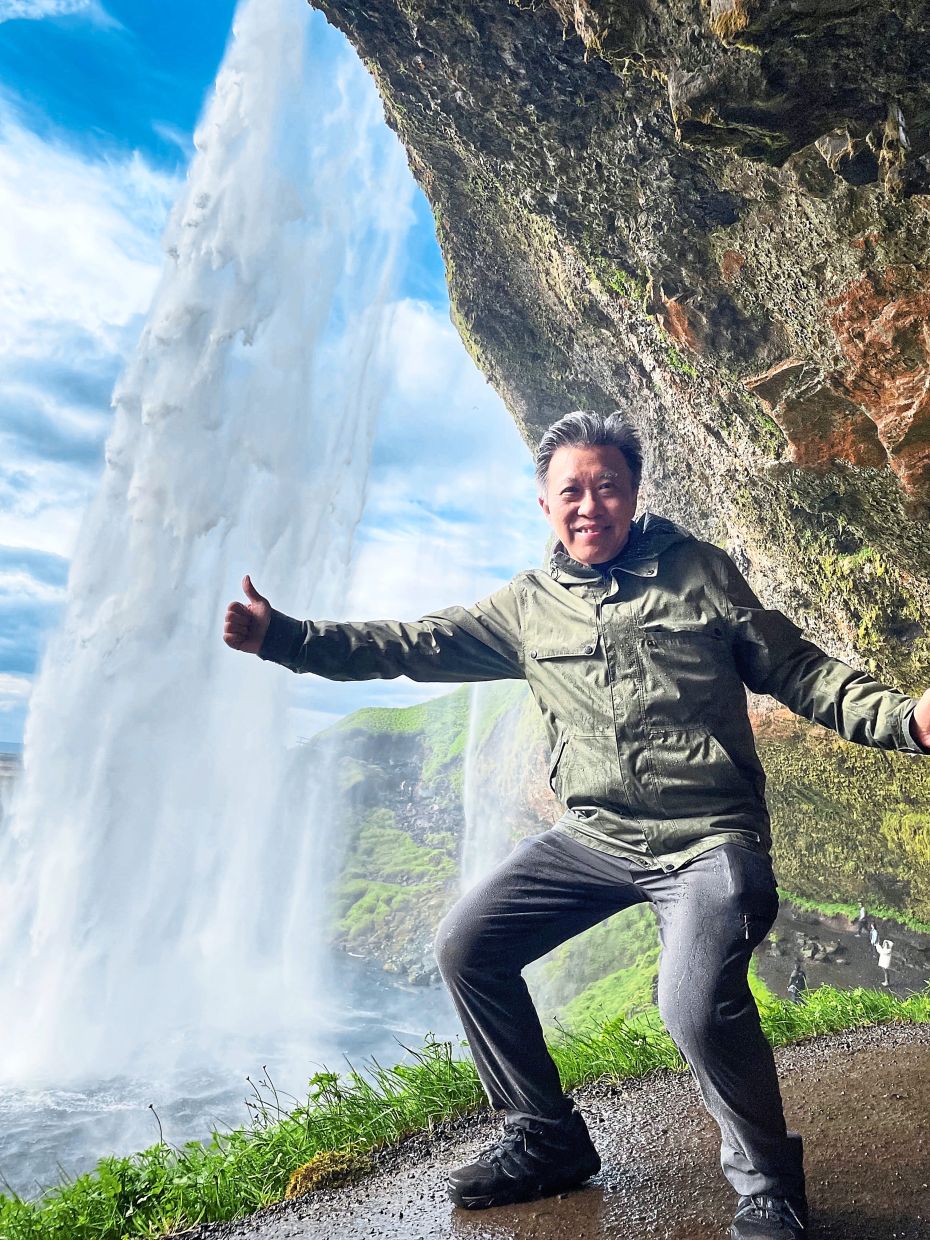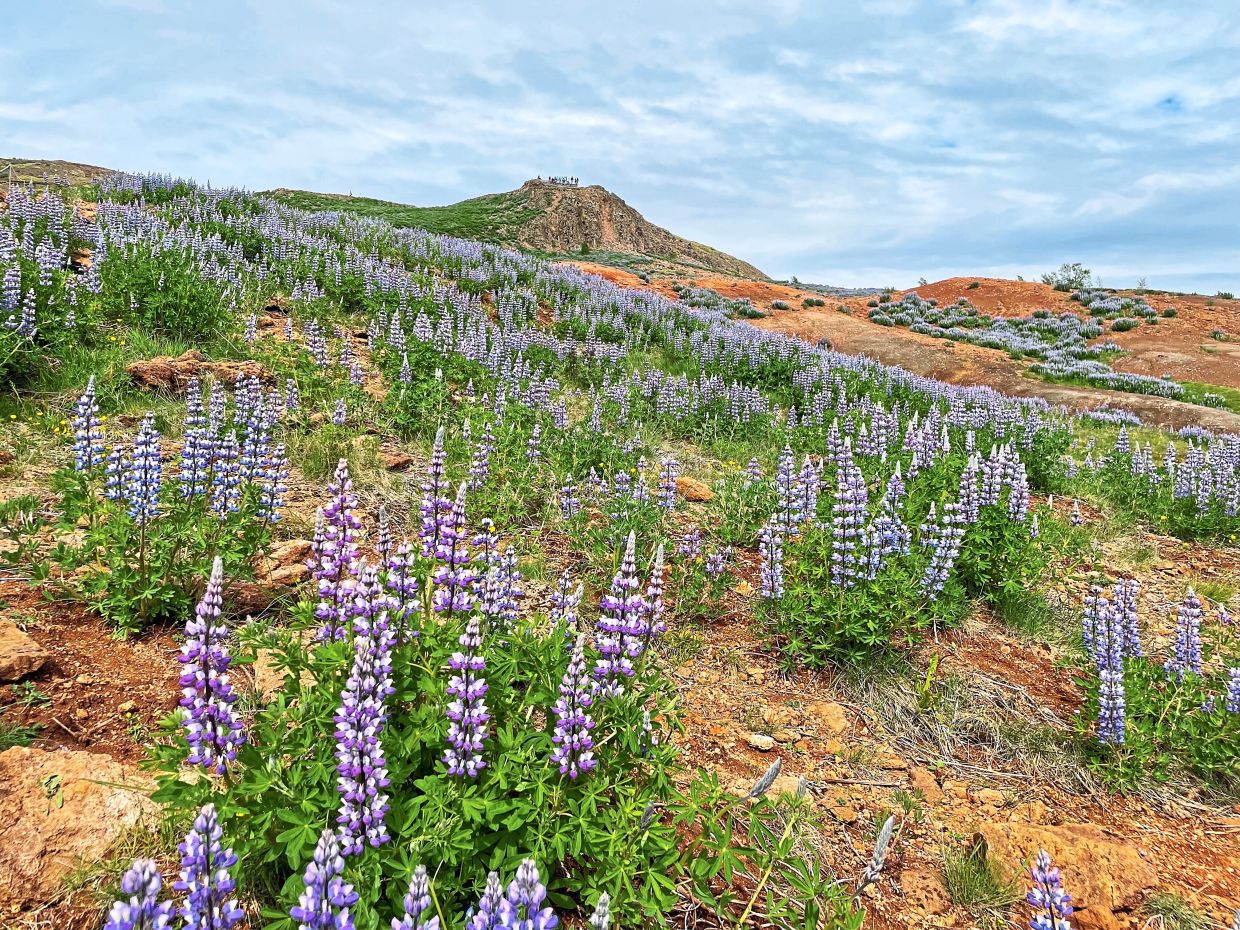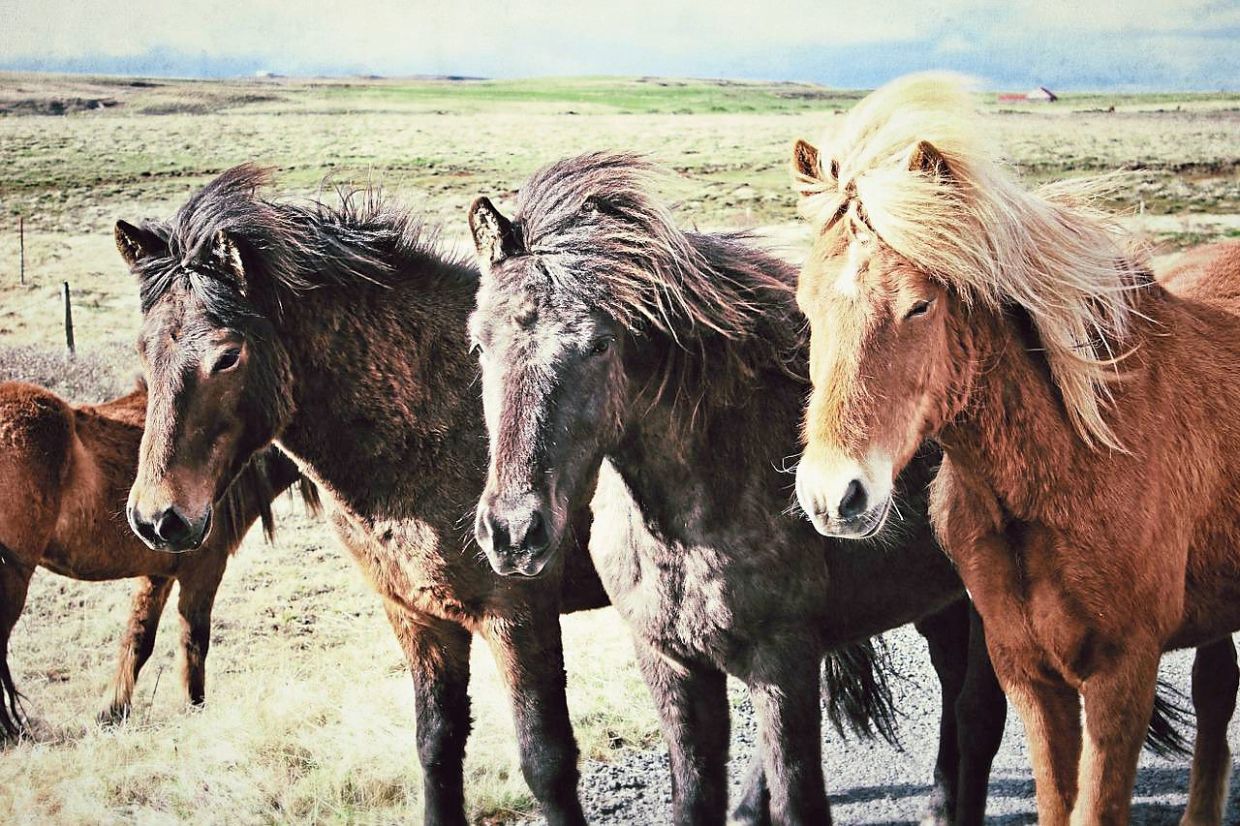
The Gullfoss, or Golden Waterfall, is a popular tourist attraction and is especially wonderful to visit in summer. — Photos: FLORENCE TEH
While the rest of Europe is suffering from a sweltering heat wave with people advised to stay at home, Iceland is surely the best place for a tourist to visit.
I visited the capital, Reykjavik, recently when summer had just started. I was told by Icelandic tour operators that it would be warm then, and there was no need for winter clothing.
In fact, as I was getting off the plane, I was smirking at all the other passengers who were putting on layers of clothes.
It then dawned on me that the Icelanders’ definition of “warm” was completely different from ours.
The other travellers, which included Europeans who are used to cold weather, would probably have the last laugh on me – if they knew I was from the tropics!
During my stay there in early June, the temperature was about 7°C in the evenings. The current temperature in Iceland is about 10°C while in some parts of Europe, it has gone up to more than 40°C.
It was my second visit to Iceland. I had visited the beautiful country in the winter of 2019, and I chose to go in the summer this time around.
The best part of summer there is that you have up to 23 hours of daylight, so it allows you more time to visit the many green moss-covered valleys and glorious waterfalls.
With the snowmelt, the sight of the huge volume of water thundering away at the falls are unforgettable sights, and they make perfect Instagram pictures too.
I took my time and marvelled at the spectacular Gullfoss, or Golden Waterfall, which is the country’s most famous waterfall.

The writer got himself completely drenched standing behind the curtain of water at the Seljaflandsfoss waterfall. — Photos: FLORENCE TEH
Gullfoss has the largest volume of waterfall in Europe, and records higher average flow in the summertime, which makes summer the best time to visit.
One would surely get to see the many rainbows formed from the mists of spray in the air around the tumbling falls.
Gullfoss is part of the Golden Circle tour, which covers southern Iceland, beginning from Reykjavik; it is a must-do for first-time travellers. Or for that matter, a “second-timer” like myself.
The tour also includes a visit to the Geyser Geothermal area. This is where visitors wait for the geyser eruption which shoots water up to 40m in the air. The wait isn’t long, and one never gets tired of looking at the the magnificent sights in the area anyway.
In fact, one will not get tired of checking out the waterfalls in Iceland as it gets better and better with each visit. They are all unique and beautiful in their own ways.

A beautiful view at the Haukadalur Geotermal Field in Iceland, covered with the purple Nootka or Alaskan alpine flowers.
While one is not able to get too close to the Gullfoss, it is the opposite for Seljalandsfoss.
The sheer force and power of the large waterfall is a reminder to us of just how small we are – our jaws dropped at God’s creation.
Falling 65m over an old sea cliff, Seljalandfoss is one of the waterfalls where you can walk behind the curtain of water, but be ready to get completely wet if you decide to do this!
The wet ground can also be slippery, and some climbing and hiking are necessary. It reminded me that one should always try to travel when the knee joints are still strong.
Summer would also be a better time to visit as the ground isn’t icy, which would then make it even more slippery.
But Iceland isn’t just about waterfalls, volcanoes, and the Blue Lagoon.
We decided to try something truly special – horseback riding on the country’s unique Icelandic horse breed. The Icelandic horses are one of the oldest breeds in the world and according to reports, they are thought to have first arrived on the island with the Vikings between 800AD and 1050AD.

Icelandic horses are one of the oldest breeds in the world. — Pixabay
The rules are simple in Iceland – no foreign livestock are allowed into the country, and any Icelandic horses that leave the island are not permitted to return!
I managed to convince my better half to join this tour with me because these shaggy-haired horses are friendly and short – unlike the horses we know.
She is terrified of heights but after our ride through some lava fields she changed her perceptions on horses, as well as on horse riding.
Summer is also an ideal time for whale watching as the seas are less choppy, the skies are sunny, and the whales turn up in large numbers.
But no trip to Iceland is complete without dipping into the waters of a geothermal spa.
It is surely one of the most popular attractions in Iceland. A dip in the natural, warm therapeutic waters, with a glass of ice-cold beer or wine, was a good way to wrap up my trip.
Just one reminder – the Northern Lights phenomenon does not occur during the summer.
The dancing lights in the skies is also what Iceland is very famous for, and having experienced it myself, the aurora borealis (as the lights are called), certainly mesmerised me.
No words can describe it until you witness the phenomenon with your own eyes.
Iceland is a tourist-friendly destination too. There is no requirement to fill up any arrival immigration forms nor a need to show your Covid-19 vaccination digital certificates.
I stayed at the Reykjavik Konsulat Hotel and the Canopy hotel – located right smack in the city centre – with plenty of shops and eateries nearby.
More pleasantly, I met fellow Malaysians who worked as hotel executives in the two properties. Despite the cold, they cheered me up with their Malaysian hospitality.
Iceland isn’t a cheap place to visit but I do hope to save up enough for another visit, to see other parts of the country.





